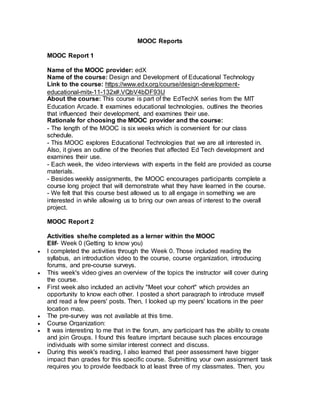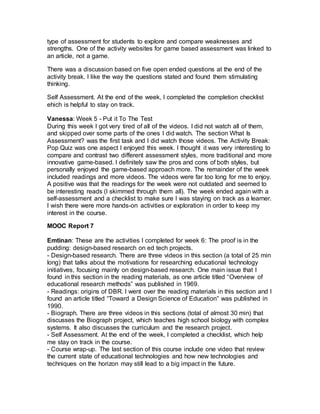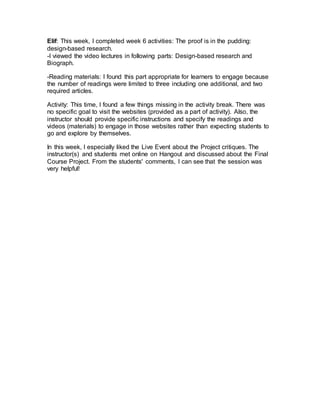The document contains reports from a MOOC on educational technology. MOOC Report 1 provides details about a course on the edX platform called "Design and Development of Educational Technology" from MIT. It examines theories influencing educational technologies. MOOC Report 2 describes activities a learner completed in Week 0 and 1, including introductions, videos on the history of edtech, and the Logo programming language. MOOC Report 3 discusses activities from Week 2 focused on learning theories. Reports continue with summaries of videos, readings and activities completed each week of the course.








